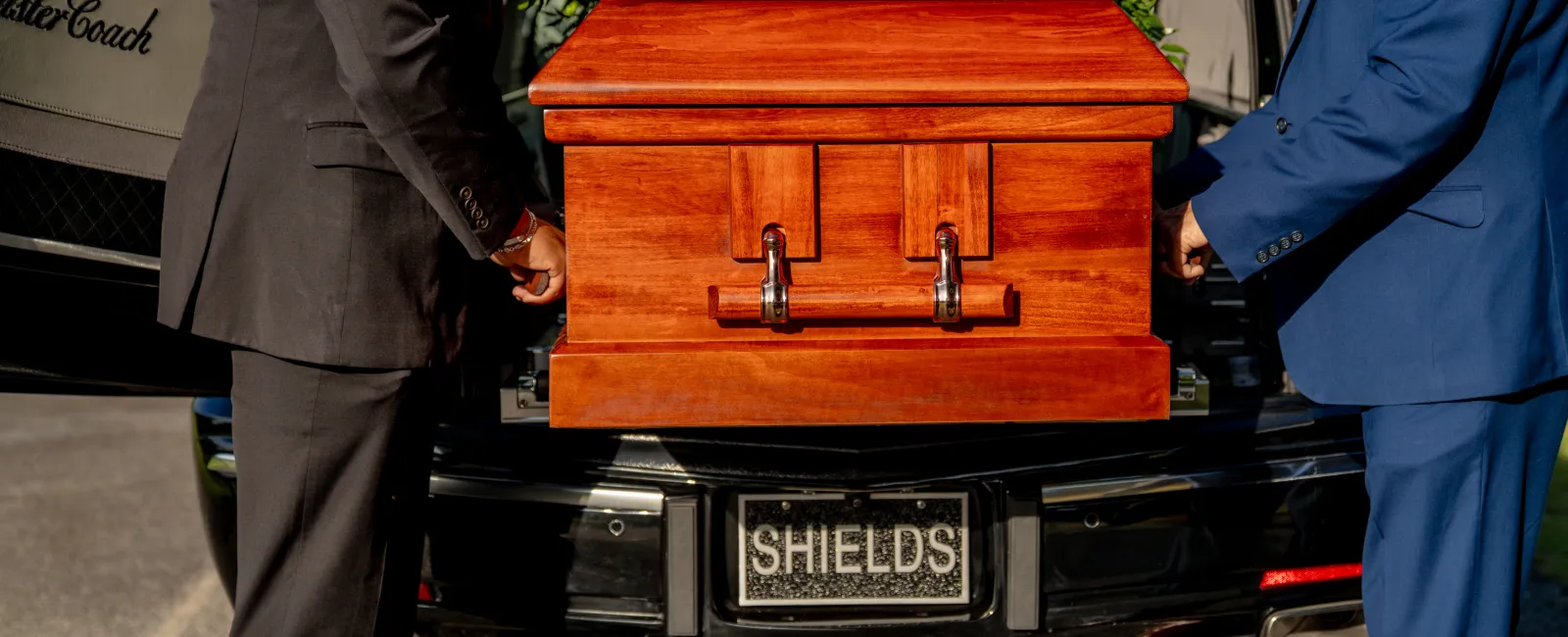Vehicles typically travel together from the funeral service to the cemetery, and this group is called a funeral procession. It's become customary for the vehicles that participate in these processions to attach flags that show they're involved in a funeral event. That means that if you own a funeral vehicle, you'll need to know how to attach a flag to a car.
Here's what you need to know about car flags in general and proper flag placement on a vehicle. We'll also touch on traffic laws that impact funeral processions.
Is It Legal to Put a Flag on Your Car for a Funeral?
Before we discuss the ins and outs of flag attachment, there's one question worth answering: Is it legal to put a flag on your car for a funeral? After all, no one wants to get stuck with paying a ticket for doing something that's outside the law. Fortunately, it's perfectly legal to put a flag on your car if it's part of a funeral.
Furthermore, attaching these flags to all vehicles participating in a funeral procession can make things safer and easier for everyone involved. Other motorists sometimes break up funeral processions because they are unaware that there is one underway. These flags let other cars on the road know that a funeral procession is in progress. The flags may encourage other motorists to give drivers participating in the procession the right of way in certain situations.
In some states, the lead vehicle in a funeral procession is legally required to attach a flag.
Types of Funeral Flags
If you thought car flags were all the same, guess again. Car flags used as part of a funeral procession come in different varieties. There are three main types of flags used to identify cars in a funeral procession:
› Car antenna flags› Car hood flags› Car window flagsHow to Attach a Flag to a Car for a Funeral Procession
We've mentioned that there are three types of car flags: car antenna flags, car hood flags, and car window flags. Proper flag attachment will vary depending on what type of flag is being used. Here are instructions for attaching different types of funeral flags for hearse.
› Car hood flags: These flags typically come with attachments that allow you to mount the flag under the hood. After installation, return to the driver's seat and check to ensure the flag is placed in a location that does not hinder your ability to drive safely.› Car antenna flags: Antenna flags have two small rubber circles placed at the top and bottom of the flag's left side. Attach the flag by stretching these circles over the antenna and sliding the flag about 4 inches down the shaft.
› Car window flags: These flags come with a car window flag holder. This car flag holder is essentially a clamp that's attached to the flag pole. To attach it, roll down the passenger-side front window, and place the clamp on the middle of the window. Then roll the window back up. Once the window is rolled up, the clamp will be held in place securely.
Flag Etiquette on Vehicles
Flag placement on cars has its own customs and traditions. It is customary for funeral flags for cars to be placed on both sides of the vehicle.
What Are the Traffic Laws Governing Funeral Processions?
If you're operating a funeral vehicle, it's helpful to know about laws that cover funeral processions. Traffic laws governing funeral processions vary from state to state. In many states, there are no laws governing these processions. However, other states have laws designed to protect drivers that are participating in funeral events. Here are some examples:
› In Delaware, the law prohibits any vehicle that's not part of the funeral procession from driving between or interfering in any way with the cars participating in the caravan.› In Florida, the lead car in the procession must have a flashing amber light if it's not a law enforcement vehicle. Florida law requires all pedestrians and vehicles -- except those involved in responding to emergencies -- to give the funeral procession right of way.
› In Georgia, the procession's lead vehicles must be marked with a flag or some other indicator. All other vehicles in the procession must keep their headlights illuminated. Funeral processions have right of way at intersections, except when an emergency vehicle is involved or directions are given by a traffic officer.
› According to Illinois traffic law, drivers participating in funeral processions have right of way at all intersections as long as their headlights and hazard lights are illuminated. The procession's lead vehicle must comply with traffic lights and stop signs. However, all procession vehicles that follow can proceed without stopping, as long as they do so with caution.
Final Thoughts
Tradition dictates that we attach flags to cars during a funeral procession. But these flags also serve a practical purpose, and they can help make the journey to the cemetery easier and safer for all vehicles participating in the event.
